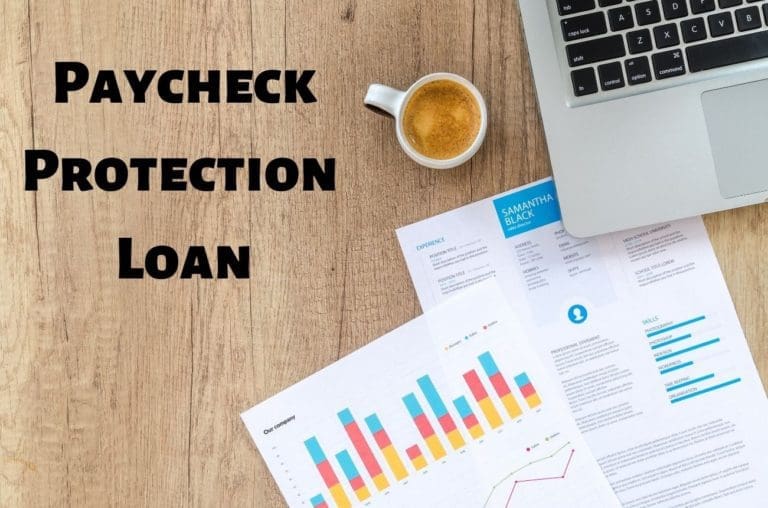The Paycheck Protection Loan requires an analysis of your business’ unique circumstances to determine the extent of Loan forgiveness that will apply. The qualified professionals at Maiello Brungo & Maiello (MBM) can assist you in the Paycheck Protection Loan application process as well as the request for forgiveness so you can keep your business afloat.
What is the Paycheck Protection Loan?
The Paycheck Protection Program (PPP) provides $349 billion in forgivable loans to small businesses so they can pay their employees during the COVID-19 crisis. The loan is forgivable if a few guidelines are followed. The loan amount must be used to pay for wages, salaries, rent, utility costs, or mortgage interest payments. To maximize Loan forgiveness employee compensation must be maintained at the same rate as before the crisis up to $100,000 on an annual basis for each employee. Loan forgiveness is also dependent upon the number of employees on your payroll during the eight (8) week period after you receive the Loan when compared to the number of employees on your payroll during either of the following two periods of time: 2/15/19 thru 6/30/19 or 1/1/2020 thru 2/30/20.
The Loan will not be forgiven to the extent it is used to pay for non qualified expenses or for those qualified non payroll expenses to the extent the qualified non payroll expenses exceed 25% of the total amount of the Loan forgiveness being requested. If the entire Loan is not forgiven, payments on the amount remaining due can be deferred for up to six (6) months. Typically, Small Business Administration (SBA) loans require borrowers to post collateral and sign a personal guarantee that they’ll repay. They are also reserved for businesses that can’t find credit through other lenders. The Paycheck Protection Loan waives these requirements.
How do I apply for the paycheck protection loan?
Small businesses can apply for a Paycheck Protection Loan through a federally insured deposit institution like an existing SBA lender. A list of existing SBA lenders can be found on the SBA website. Applications for the Paycheck Protection Loan opened on April 3rd for small businesses and nonprofits. Applications for self-employed and independent contractors open on April 10th. Some banks have already been overwhelmed by the number of applications. For example, Wells Fargo has already reached its $10 billion limit and is no longer taking new loan requests. The Federal Reserve has stepped in to support the Paycheck Protection Loan Program so that banks can keep lending money. Applications for Paycheck Protection Loans will be open until June 30th, but small businesses are encouraged to apply as soon as possible due to the time it takes to process the loans.
Who is eligible for the paycheck protection program?
Any small business, veteran’s organization, or nonprofit that employs 500 people or less is eligible to apply for a Paycheck Protection Loan. This includes sole proprietors, self-employed individuals, and independent contractors. The 500-employee rule does not apply if a small business is: (a) in the hotel and food services industry, (b) a franchise, or (c) currently receiving financial support from small business investment companies, assuming the business meets the applicable SBA employee-based size standards. You must restore the number of your full-time staff by June 30th.
What do commercial lenders look for?
For small businesses, the Paycheck Protection Loan is different from traditional loans because it does not have the traditional requirements of most commercial lenders. Local banks are usually the first place small businesses go when in need of a loan. This is most likely because the local banks already have all of their information on file. Unfortunately, it is common to get turned away by local banks even if the business is profitable. Commercial lenders look for businesses with narrow profiles. Loans through the Small Business Administration can be simpler to qualify for, but often, lenders lend to businesses that make more than $1 million annual revenue, have been in operation for several years, have a businesses owner with a credit score of over 700, and can put up collateral to secure the loan. Additionally, the commercial lenders prefer larger loan amounts.
What is the Cares Act for small businesses?
The Paycheck Protection program is part of the $2 Trillion Coronavirus Aid, Relief and Economic Security (CARES) Act passed on March 27, 2020. In addition to the Paycheck Protection Loan, the CARES Act establishes other programs to help small businesses survive the stress of the COVID-19 crisis. The Economic Injury Disaster Loan Emergency Advance (EIDL) provides loans of up to $2 million for small businesses and nonprofits with low interest rates of 3.75% and 2.75% respectively. Payments can be deferred for up to a year and interest does not accrue during this time. Loans of less than $200,000 require no personal guarantee and loans less than $25,000 require no collateral. Other requirements are waived such as proof that no other funding source can be found and 1-year operating history. The CARES Act also allows the delay of payment of employer payroll taxes, a tax credit against the employer’s social security tax payments, and employer tax credits for sick/family leave. There are many other provisions that could benefit your small business so it’s important to discuss your options with your attorney and accountant.
What is a forgivable loan?
Forgivable loans are loans for which a portion or even the entire loan can be deferred or does not need to be paid back if certain criteria are met. This makes them closer to grants than traditional loans. The Paycheck Protection Loan is a forgivable loan. Small businesses may receive money, but they must meet the following criteria to qualify to have all or a portion of the Loan forgiven:
- Spend Loan proceeds within the 8-week period (“Covered Period”) beginning on the date you receive the Loan proceeds on qualified payroll costs and other qualified costs specifically identified such as rent, utilities, interest on debt incurred prior to February 15, 2020 etc. At least 75% of the Loan proceeds should be spent on payroll costs (including benefits). Expenditures on qualified non payroll costs such as mortgage interest, rent, or utilities in an amount that exceeds 25% of the requested Loan forgiveness amount will not be forgiven. Amounts properly spent will be eligible for Loan forgiveness.
- Maintain number of full-time equivalent employees during the 8-week Covered Period equal to the number of employees on staff during certain specified pre-virus time periods or suffer a reduction in Loan forgiveness based on the percentage reduction in staff.
- Maintain staff salaries/wages at 75% or more for employees being paid $100,000 or less annually during the 8-week Covered Period.
Forgiveness for the Paycheck Protection Loan must be requested by submitting a request to the lender and proving the above criteria were met. Your lender will specify the information required to be submitted. Keep detailed records during the 8-week spend period. The lender must make a decision within 60 days of the forgiveness request.
Contact MBM Law for guidance on the Paycheck Protection Loan application process. Our professionals will provide advice on how to apply and receive forgiveness for your loan.


